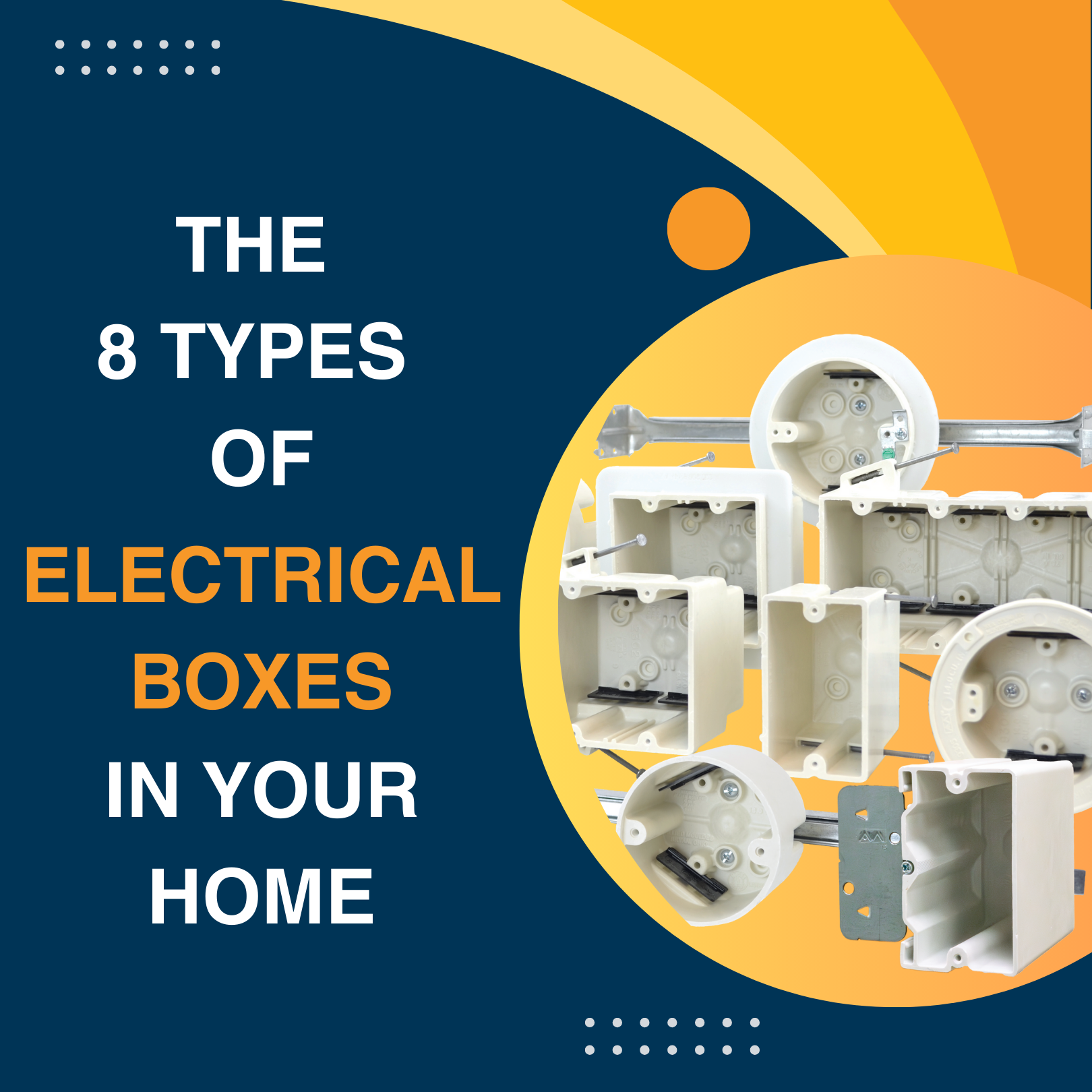
When you use electricity in your home, you rely on electrical boxes whether you realize it or not. If you ever want to install an outlet, switch, overhead light, or other new electrical device in your house, you need to install a box for it.
This guide will talk you through the most common kinds of electrical enclosures in a home and when you might use them.
Single Gang Box
The most common box style you will see in a home, the single-gang box is rectangular in shape and designed to house a single device. It’s wide enough for one switch or one outlet, and that’s all. These boxes are simple on purpose, allowing you to install a plate where you need it in your wall. They don’t offer extra frills or functions beyond that.
Multi Gang Box
A multi-gang box is just like a single-gang box except that it is wider. The width allows for more than one device in a single box. Multi-gang boxes range from two to four gangs for standard builds, and specialty boxes can add even more gangs.
Most commonly, you will use these boxes for light switch groups, such as a pair of switches for a ceiling fan and the attached light.
New Construction vs Remodel
Regardless of the box shape, it can come in one of two styles: new construction or remodel, and the names really say it all. New construction boxes are designed for installation in a new home before the drywall goes up. Meanwhile, remodel boxes are designed for installation after your walls have their finishing layer. The real difference is in the surface. Remodel box surfaces account for wall finishes while new construction boxes do not.
Combination Box
A combination box is designed to house a power line and a communications line. The box has two components: one for each of these functions. As the communication line does not represent the same fire risk as a power line, the communications side of the combination box is usually open-ended.
Lighting Box
Lighting boxes are usually designed for a single device installation, but that device can be a ceiling fan, overhead light, or combination device. These boxes are circular in shape, and each design has a weight rating. Be sure the rating is sufficient to hang the desired device from the box.
Exterior Box
You can guess from the name — these boxes go outside. They’re designed to sit flush with your exterior walls to prevent water ingress. They’re also designed to withstand outdoor weather. For outdoor applications, you need to have exterior-rated boxes. It’s a matter of building code.
Floor Box
Floor boxes are round like ceiling boxes, but they have two distinct design features. One is a plate that ensures the box can stand up to foot traffic. The other is a seal that prevents moisture from penetrating the box in case someone spills a drink.
As the name suggests, these boxes allow you to install devices in the floor, such as a floor outlet.
Adjustable Box
The last item on the list is the adjustable box. This is a standard box (typically a single gang) with a special feature. Screws in the box allow you to adjust the depth to which it sits in the wall. This adjustment allows the box to account for variable finishes on the wall.
For example, adjustable boxes can match the protrusion of backsplash tiles in your kitchen, creating a flush fit.
